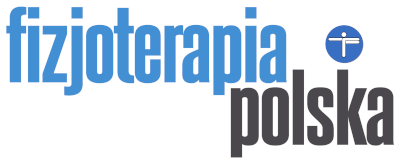Kinesitherapeutic procedure in the treatment of scoliosis
Piotr Kwiatkowski, Magdalena Sobiech, Marek Fatyga, Andrzej Skwarcz
Piotr Kwiatkowski, Magdalena Sobiech, Marek Fatyga, Andrzej Skwarcz – Kinesitherapeutic procedure in the treatment of scoliosis. Fizjoterapia Polska 2001; 1(3); 298-302
Varying kinesitherapeutic procedures are used In children with scoliosis, depending on whether the child is begin only by exercises, or by exercises and brace, or is begin prepared for surgery due to progressing deformation. In the case of children treated conservatively, primary emphasis is given to asymmetrical strengthening exercises for the dorsal muscles and peripheral joints, preceded by stretching exercises for antagonistic muscle groups. Simultaneously, exercises are performed to increase the range movement in the spine (kypholization of the thoracic spine, derotation of the thoraco-lumbar spine) and peripheral joints. In scoliosis exceeding 25-30° with documented progression, orthopedic braces are also used to prevent further progression of the curvature. In such cases it is a separate problem, when the child should exercise in the brace, and when without.Kinesitherapy in children being prepared for surgery differs significantly from that suitable for children in conservative treatment. Here the primary focus is on relaxing, elongating, and the spine. This is achieved by applying an autotraction bed for several hours, along with autocorrection of posture and passive chin-ups. By means of stretching, relaxing, and swimming poolexercises, along with the application of physical agents, the maximum relaxation of the spine’s active and passive apparatus is achieved, so that during surgery the maximum correction of curvature can be obtained while maintaining neurological safety.
| Invalid download ID. | Pobierz bezpłatnie artykuł w j. angielskim |

